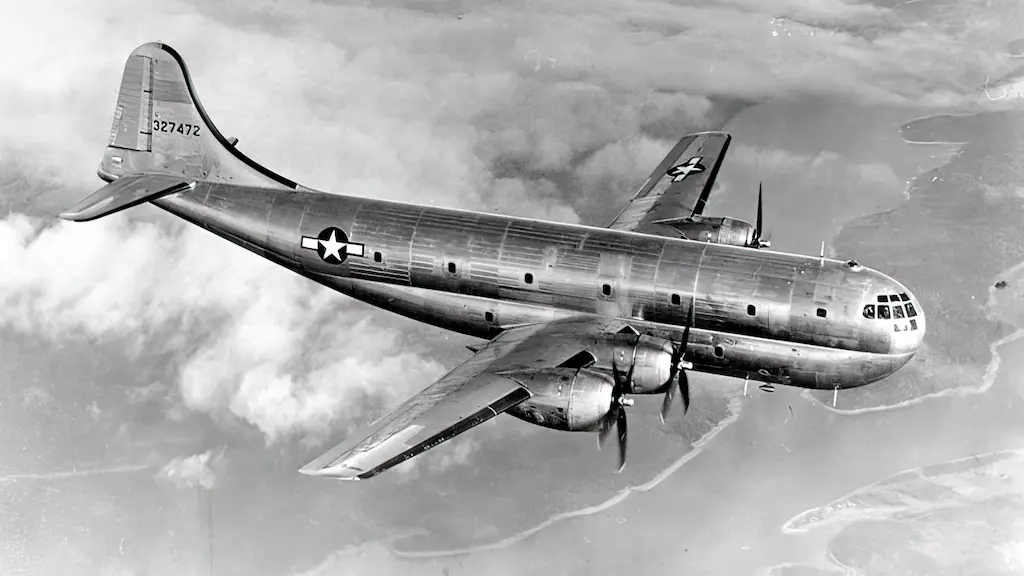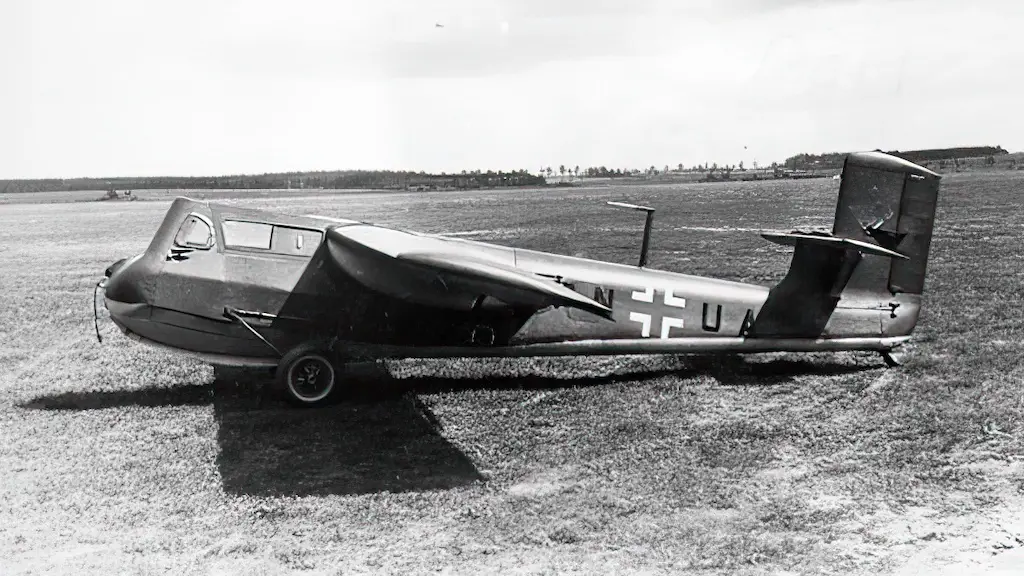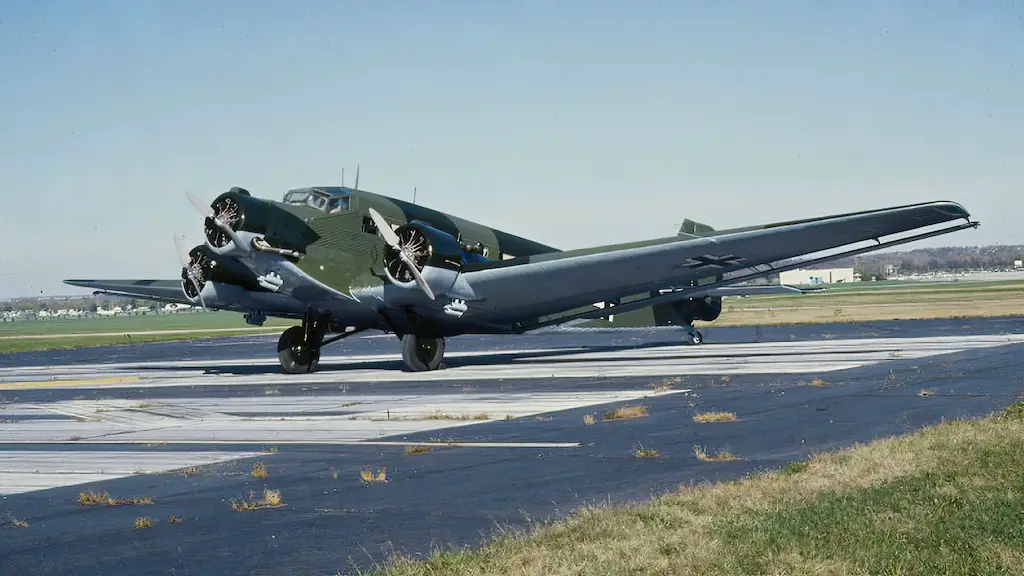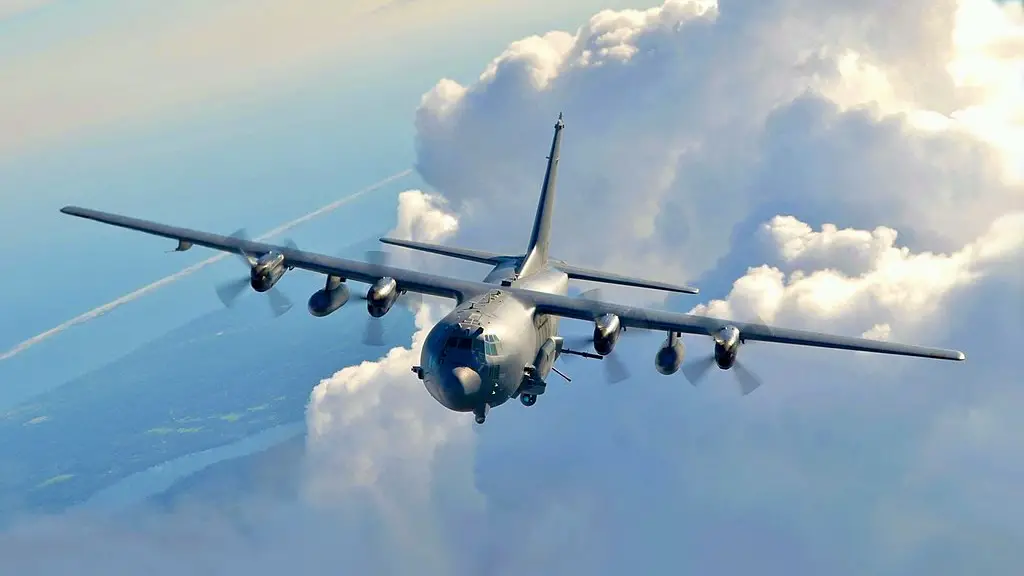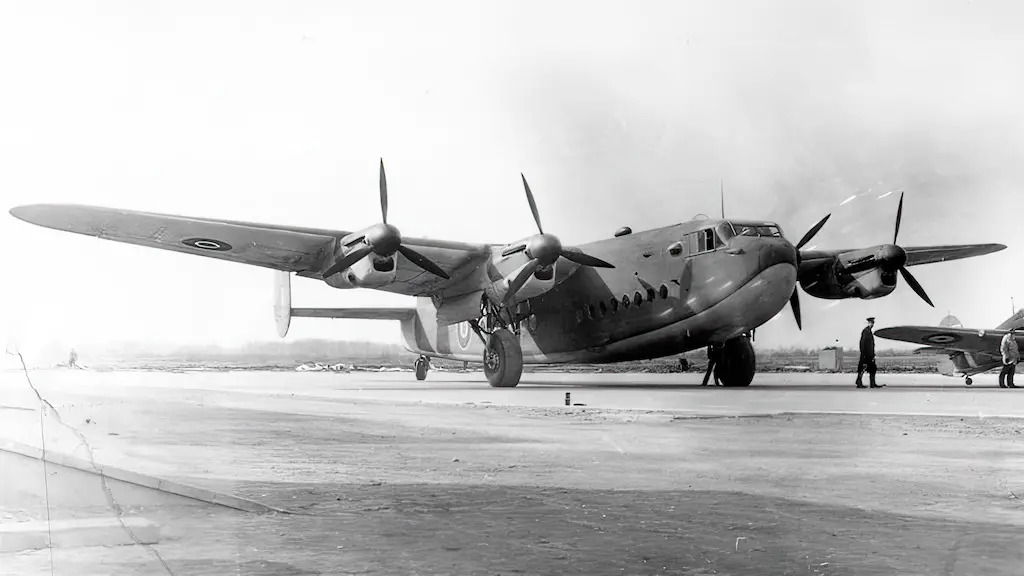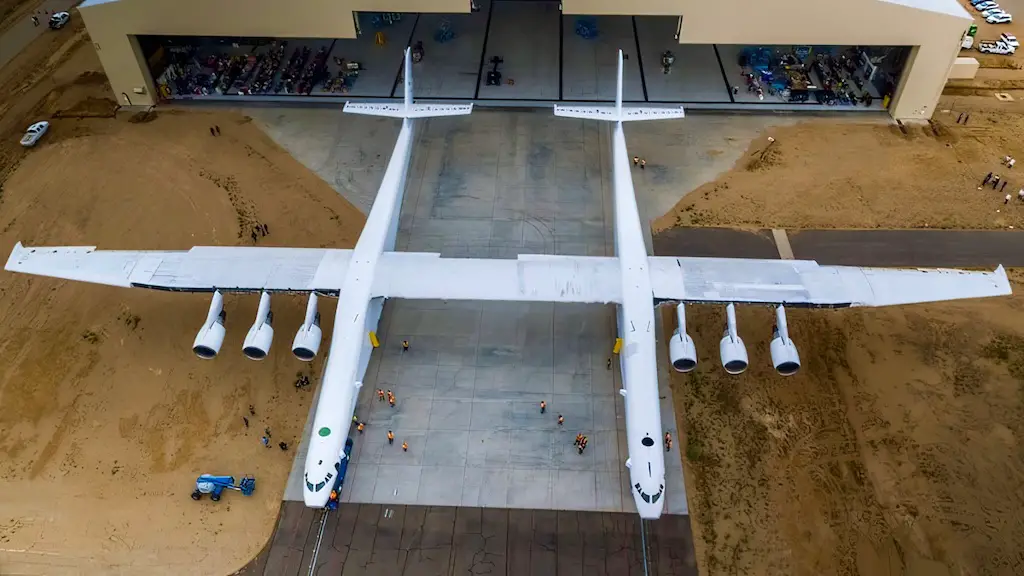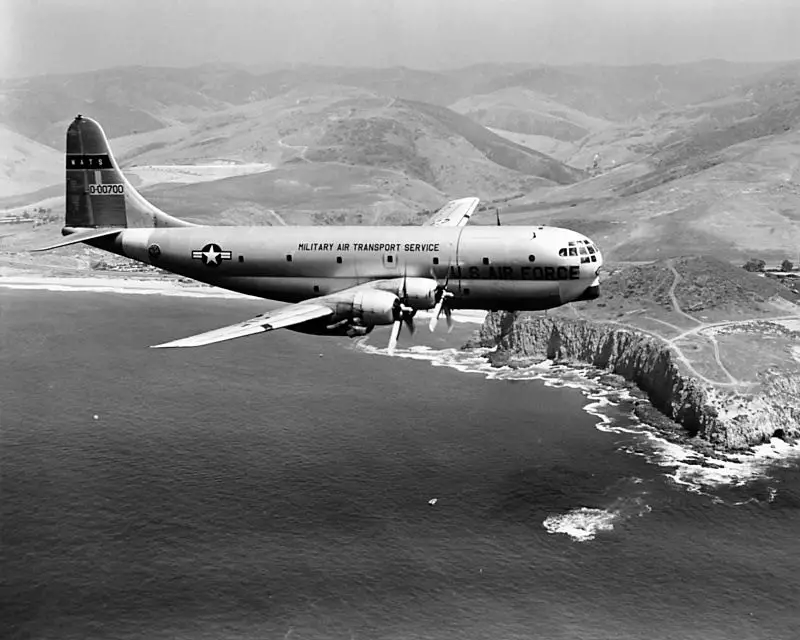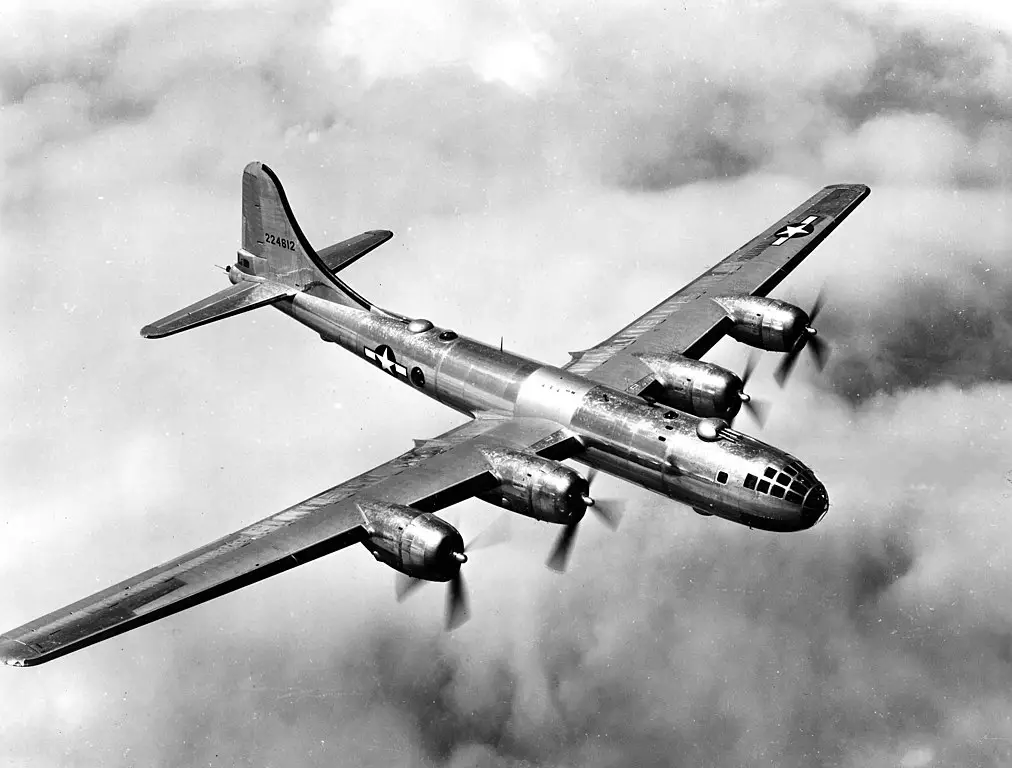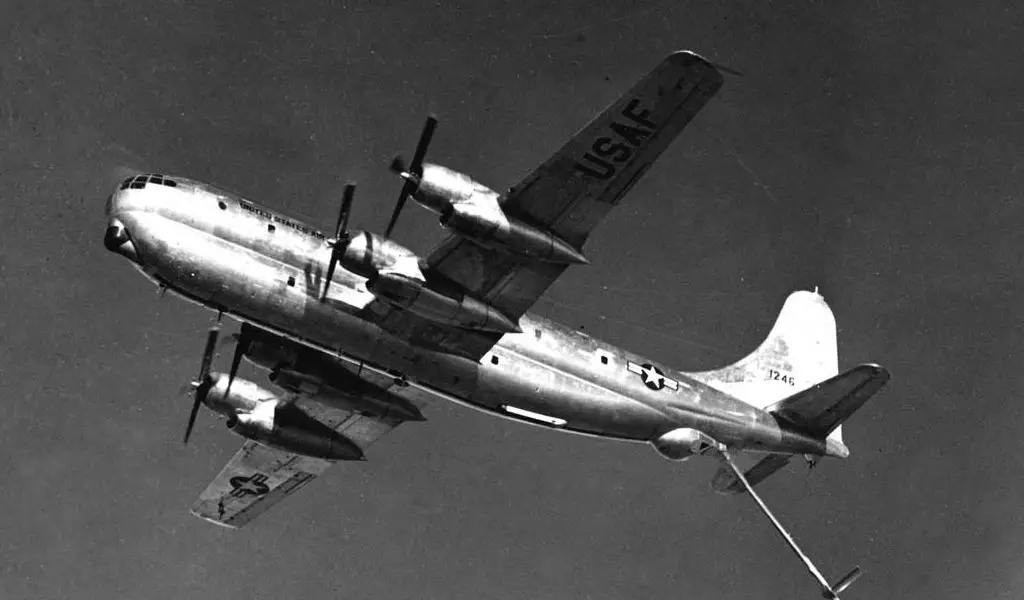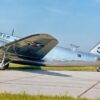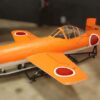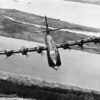The Boeing C-97 Stratofreighter, a large four-engine propeller-driven transport aircraft, forged new paths in the world of air transportation. With the capacity to carry substantial payloads across extensive distances, this aircraft was grounded in a rich heritage, evolving from the B-29 Superfortress bomber. Inheriting many characteristics from the B-29, such as the identical engines and tail assembly, the C-97 also secured a distinctive spot in aviation history as the precursor to everyone’s favorite Guppy family of aircraft.
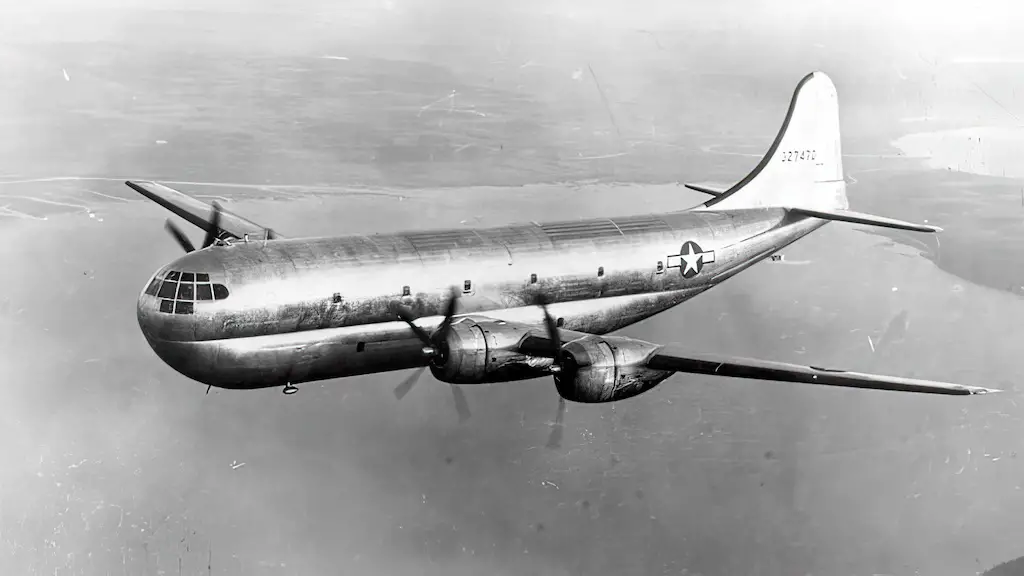
Development History
In the waning years of the 1940s, Boeing identified the demand for a durable long-distance transport aircraft that could cater to both military and civilian sectors. Drawing inspiration from the triumphant B-29 Superfortress bomber, they set out on a quest to forge the C-97 Stratofreighter.
Facing a path strewn with obstacles, engineers worked tirelessly to craft an aircraft capable of managing hefty payloads without sacrificing efficiency. Incorporating elements of the B-29’s wings, engines, and tail assembly, significant modifications were made to the fuselage and loading mechanisms. In a relatively short span, the C-97 surfaced as a beacon of American ingenuity and inventive thinking.
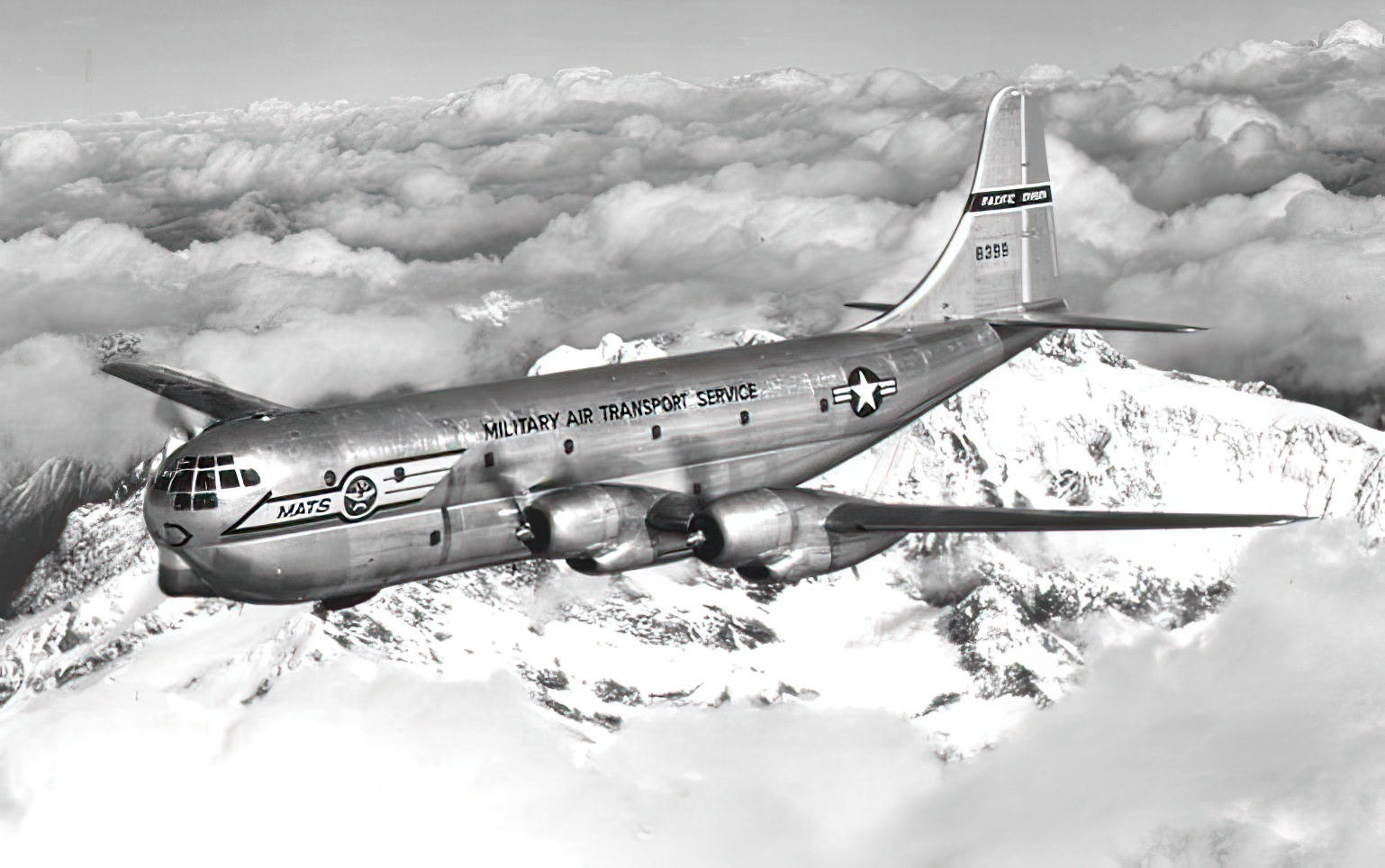
The Engine
The essence of the C-97 resided in its mighty engines. Harnessing the same Pratt & Whitney R-4360 radial engines as the B-29, the Stratofreighter became a force to be reckoned with in the sky. Each engine unleashed an impressive 3,500 horsepower, empowering the aircraft to bear over 30 tons of cargo.
The design of the engine itself stood as a testament to skilled engineering, comprising 28 cylinders arranged in quadruple rows. Its dependable performance and efficiency were instrumental in the C-97’s triumph, enhancing its reach and capacity for carrying heavy loads.
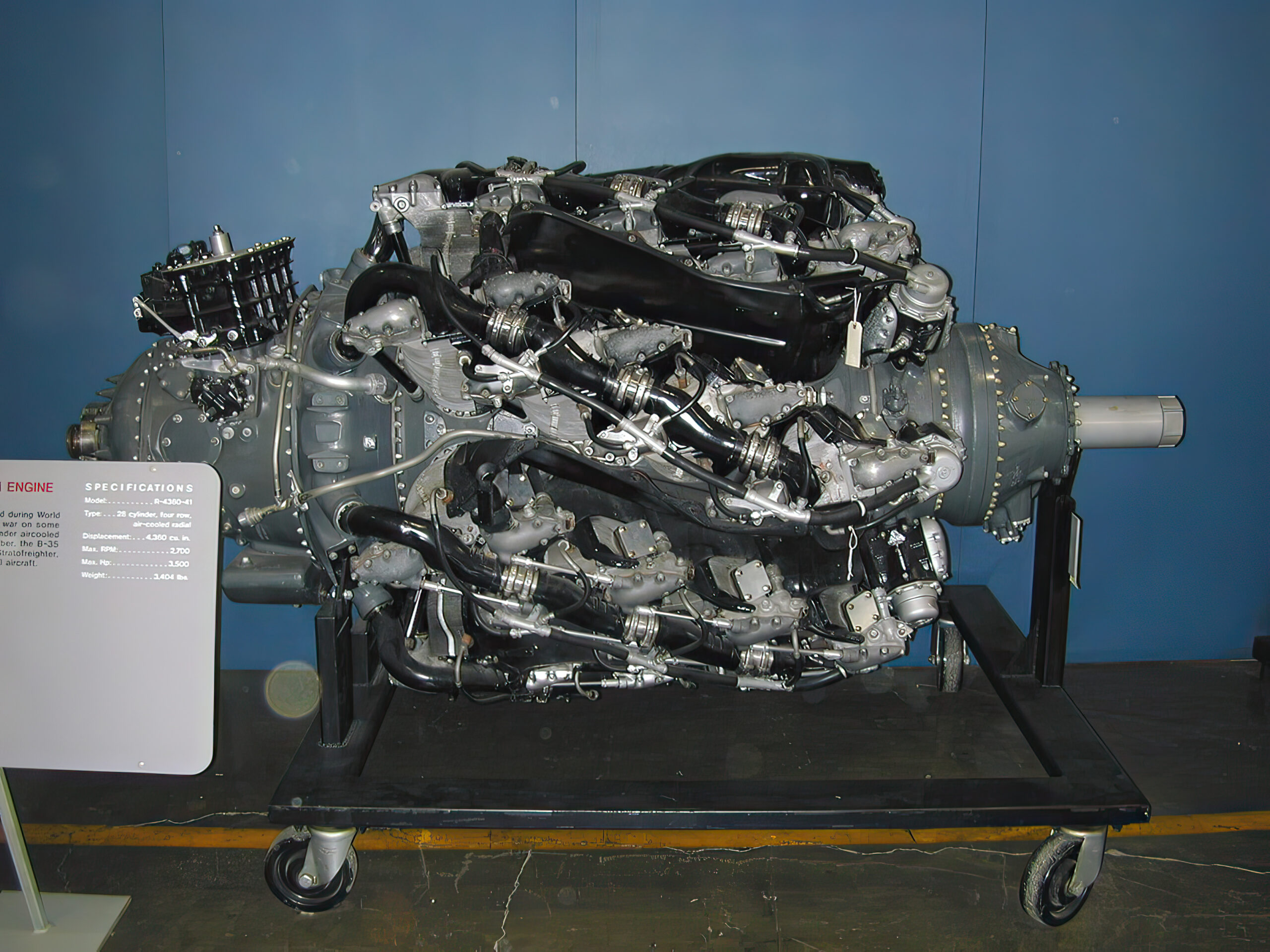
Operational Use
Making its debut in 1947, the C-97 Stratofreighter rapidly demonstrated its ability as a multi-faceted and dependable transport aircraft. Initially donning the colors of the U.S. Air Force, it played a crucial role in operations such as the Berlin Airlift, extending a lifeline of essential supplies to those trapped by circumstance. Beyond the military sphere, the C-97 found its niche within commercial aviation, attracting operators with its considerable cargo handling prowess and flexibility.
Master of Adaptation
The Boeing C-97 Stratofreighter was not a one-size-fits-all aircraft. Its ability to adapt to various needs led to the creation of several different variants, each catering to specific roles and missions.
The KC-97, a tanker version, became a critical part of the U.S. Air Force’s aerial refueling fleet. With specialized equipment for fuel transfer, it extended the range and capabilities of fighter jets during critical missions.
On the civilian side, the Stratocruiser version introduced an unprecedented level of comfort and luxury in commercial air travel. With spacious cabins, sleeping berths, and even onboard lounges, the Stratocruiser offered passengers a taste of opulence in the skies.
These variations on the C-97’s design showcased the aircraft’s incredible adaptability and continued to push the boundaries of what was possible in aviation. It was this willingness to innovate and adapt that allowed the Stratofreighter to remain relevant and vital long after its initial introduction, further solidifying its place in aviation history.
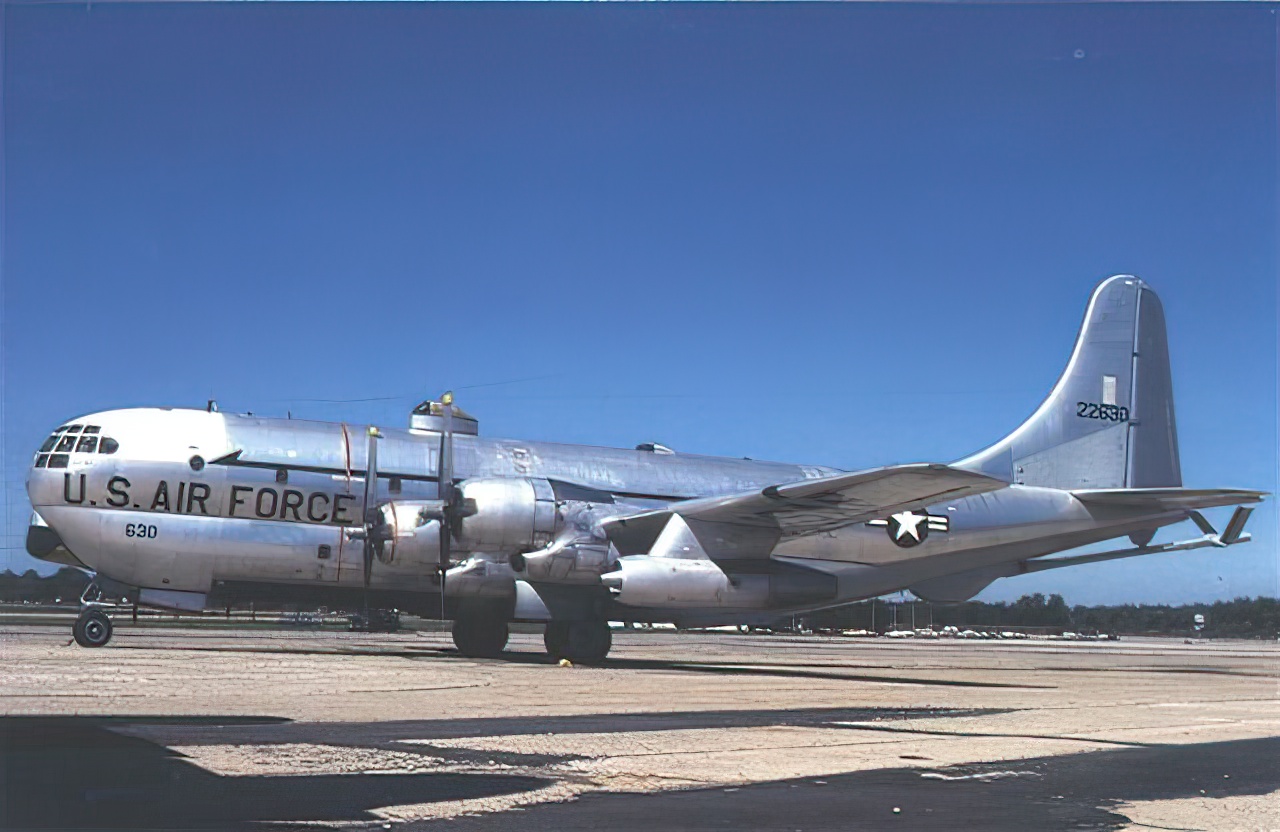
The Legacy Continues
Perhaps one of the most fascinating chapters in the C-97’s story is its transformation into the Guppy family of aircraft. As the need for transporting oversized cargo grew, Boeing saw an opportunity to modify the Stratofreighter to meet this unique demand.
The resulting Guppy planes, with their distinctive bulbous fuselages, became symbols of specialized transportation. From transporting space equipment to housing exhibits, the Guppy variants demonstrated the C-97’s inherent adaptability and continued to charm aviation enthusiasts around the world.

